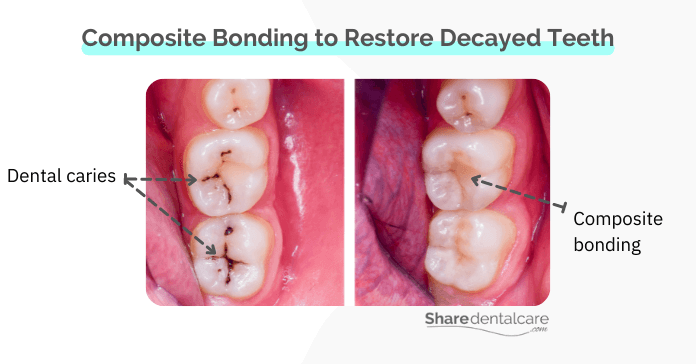It’s been said that a smile is the language of the soul. But what happens when your smile is missing some teeth? Well, it might not be as easy to communicate with others, and you may feel self-conscious about how you look. Missing teeth can also lead to other dental problems such as gum disease and tooth decay. Fortunately, there are ways to get your teeth back. In this blog post, we will discuss whether composite bonding can be used to replace a missing tooth and what are other treatment options available.
What is Composite Bonding?
Composite bonding is a treatment that uses tooth-colored resin to repair chipped, cracked, or decayed teeth. The resin is applied in thin layers and hardened with ultraviolet light. Composite bonding can also be used to improve the appearance of teeth that are stained, discolored, oddly shaped, or have gaps between them.
Composite bonding is used to repair teeth that are chipped, cracked, decayed, or discolored. It is a fast procedure and an inexpensive alternative to porcelain veneers or dental crowns. Although it won’t last as long as these types of treatments.
Read more about putting a crown on a cracked tooth.
How is Composite Bonding Applied?
Composite bonding is a quick and easy procedure that can be done in one visit. The resin is applied to the tooth in thin layers and hardened with ultraviolet light. The process usually takes about 30 minutes.
The composite resin used for bonding is tooth-colored so it will blend in with the surrounding teeth. It is also durable and will last for several years.

Can Composite Bonding Be Used to Replace a Missing Tooth?
No, composite bonding isn’t strong enough to replace a missing tooth. Composite bonding is white or tooth-colored filling material, not a tooth replacement. If you are missing a tooth, you can’t replace it with composite bonding but you can choose one of these treatment options:
- Dental implants: they are the most natural-looking and longest-lasting replacement for missing teeth. They are made up of three parts: the implant, the abutment, and the crown. The implant is placed in the jawbone and the abutment screws into the implant to hold the crown in place. Dental implants can last a lifetime but require surgery and have a high price.
- Dental bridges: they are a fixed option if you are missing one or more teeth. A bridge is made up of two dental crowns that are attached to a false tooth, called a pontic. The pontic is placed between the two crowns and held in place by them. Dental bridges can last 10-15 years but they require healthy teeth on either side of the missing tooth or teeth. Read more about bridge types in dentistry.
- Dentures: they are a removable option for replacing missing teeth. They are made of plastic or acrylic and fit over the gums. Dentures can last 5-10 years but they need to be taken out at night for cleaning.
Composite bonding is used to repair a cracked or chipped tooth, not to replace a lost tooth. Talk to your dentist to know more about your options for replacing a missing tooth. Read more about the different types of teeth replacement.
Composite Bonding for a Missing Tooth – Conclusion
Composite Bonding does not replace a missing tooth but it can be used to repair cracked, chipped, decayed, or discolored teeth. If you have a missing tooth, there are many options for replacement such as dental implants, bridges, and dentures. Each option has advantages and disadvantages. When considering your treatment options, always talk with the dentist about what will work best for you.